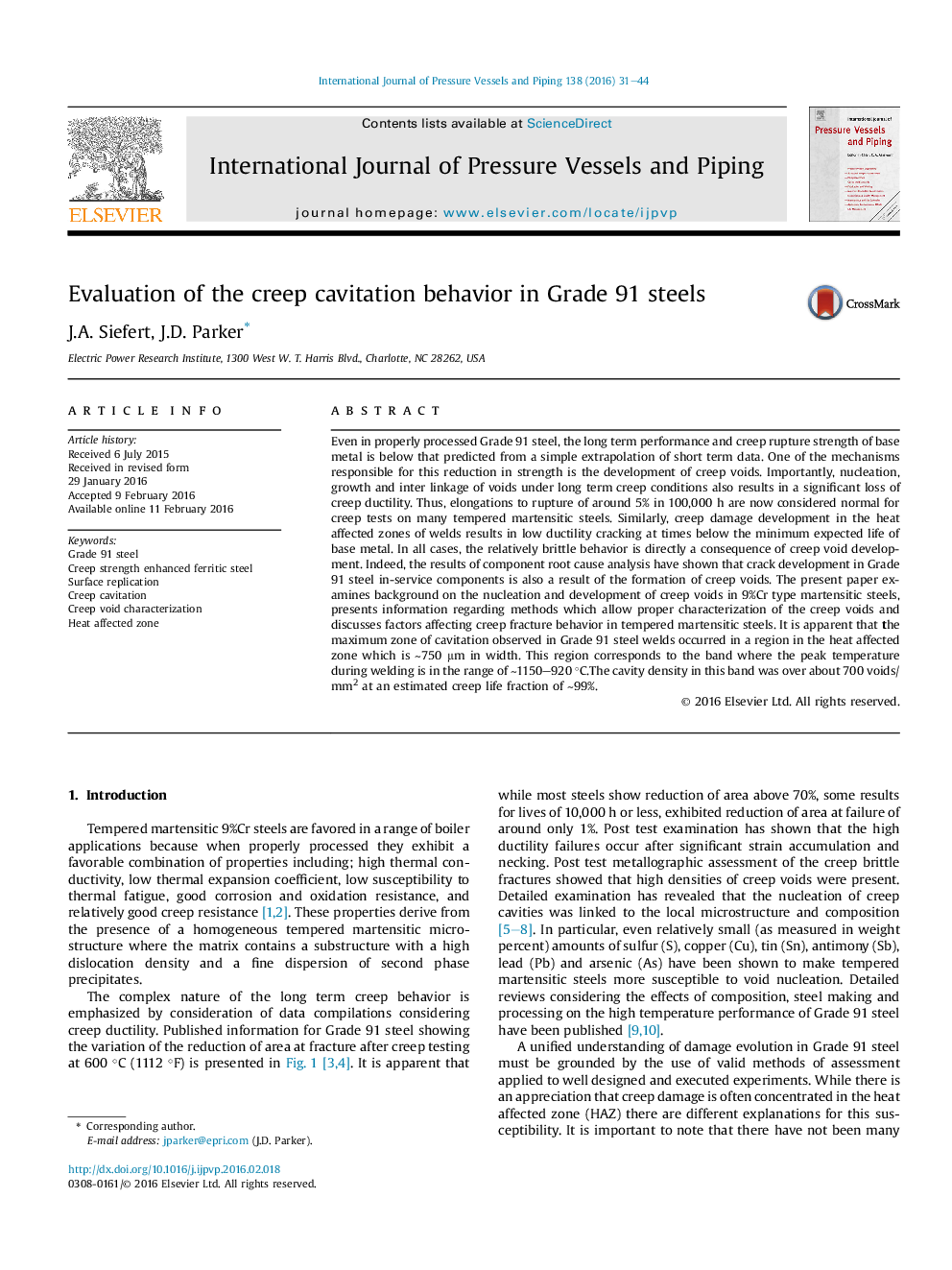| Article ID | Journal | Published Year | Pages | File Type |
|---|---|---|---|---|
| 788324 | International Journal of Pressure Vessels and Piping | 2016 | 14 Pages |
•The present paper examines background on the nucleation and development of creep voids in 9%Cr type martensitic steels.•Information regarding methods which allow proper characterization of the creep voids is also presented.•Factors affecting creep fracture behavior in tempered martensitic steels are identified and discussed.
Even in properly processed Grade 91 steel, the long term performance and creep rupture strength of base metal is below that predicted from a simple extrapolation of short term data. One of the mechanisms responsible for this reduction in strength is the development of creep voids. Importantly, nucleation, growth and inter linkage of voids under long term creep conditions also results in a significant loss of creep ductility. Thus, elongations to rupture of around 5% in 100,000 h are now considered normal for creep tests on many tempered martensitic steels. Similarly, creep damage development in the heat affected zones of welds results in low ductility cracking at times below the minimum expected life of base metal. In all cases, the relatively brittle behavior is directly a consequence of creep void development. Indeed, the results of component root cause analysis have shown that crack development in Grade 91 steel in-service components is also a result of the formation of creep voids. The present paper examines background on the nucleation and development of creep voids in 9%Cr type martensitic steels, presents information regarding methods which allow proper characterization of the creep voids and discusses factors affecting creep fracture behavior in tempered martensitic steels. It is apparent that the maximum zone of cavitation observed in Grade 91 steel welds occurred in a region in the heat affected zone which is ∼750 μm in width. This region corresponds to the band where the peak temperature during welding is in the range of ∼1150–920 °C.The cavity density in this band was over about 700 voids/mm2 at an estimated creep life fraction of ∼99%.
